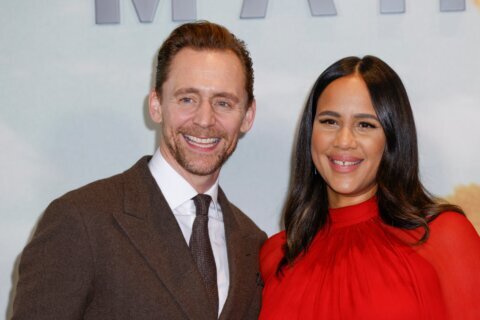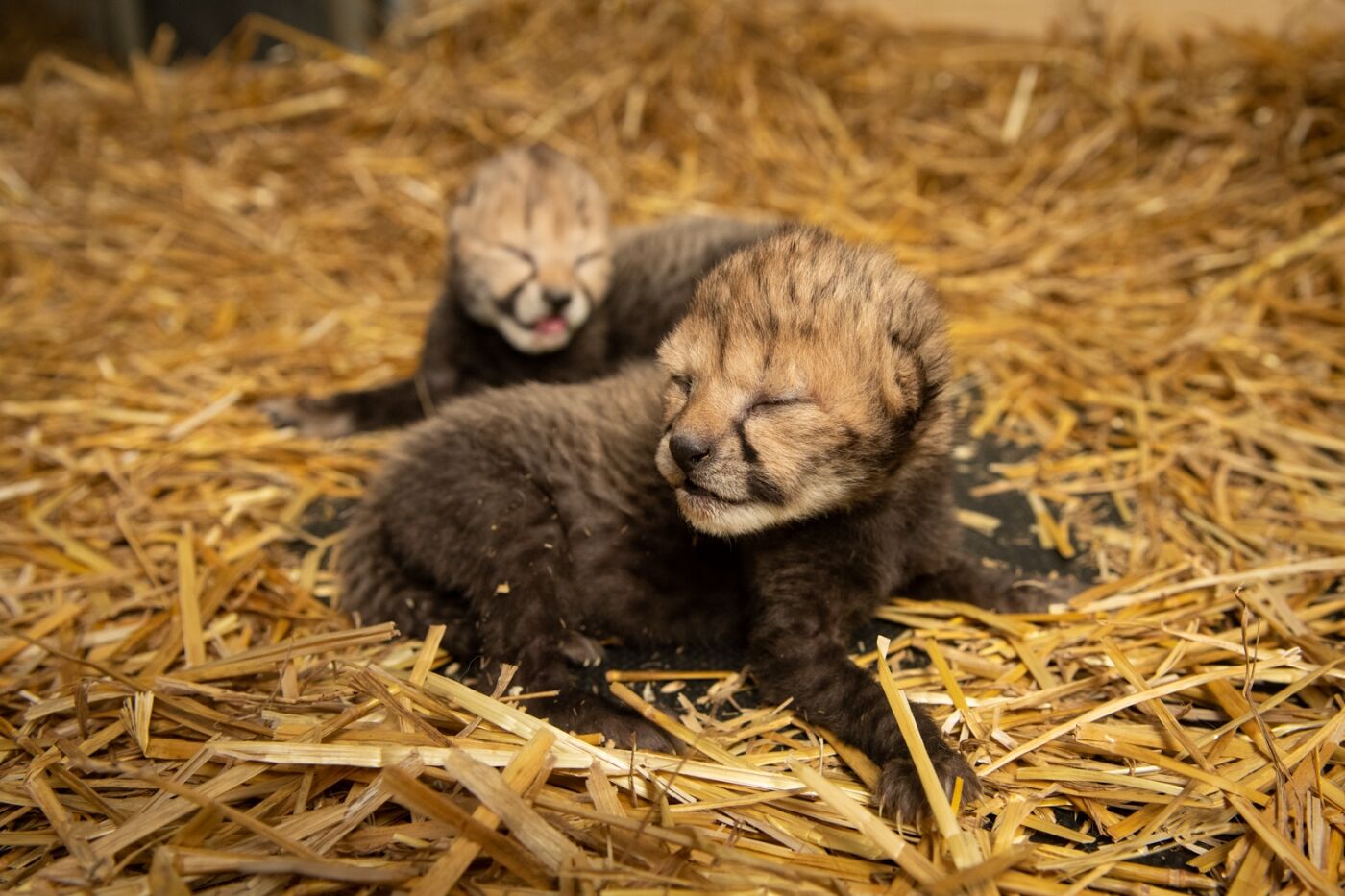
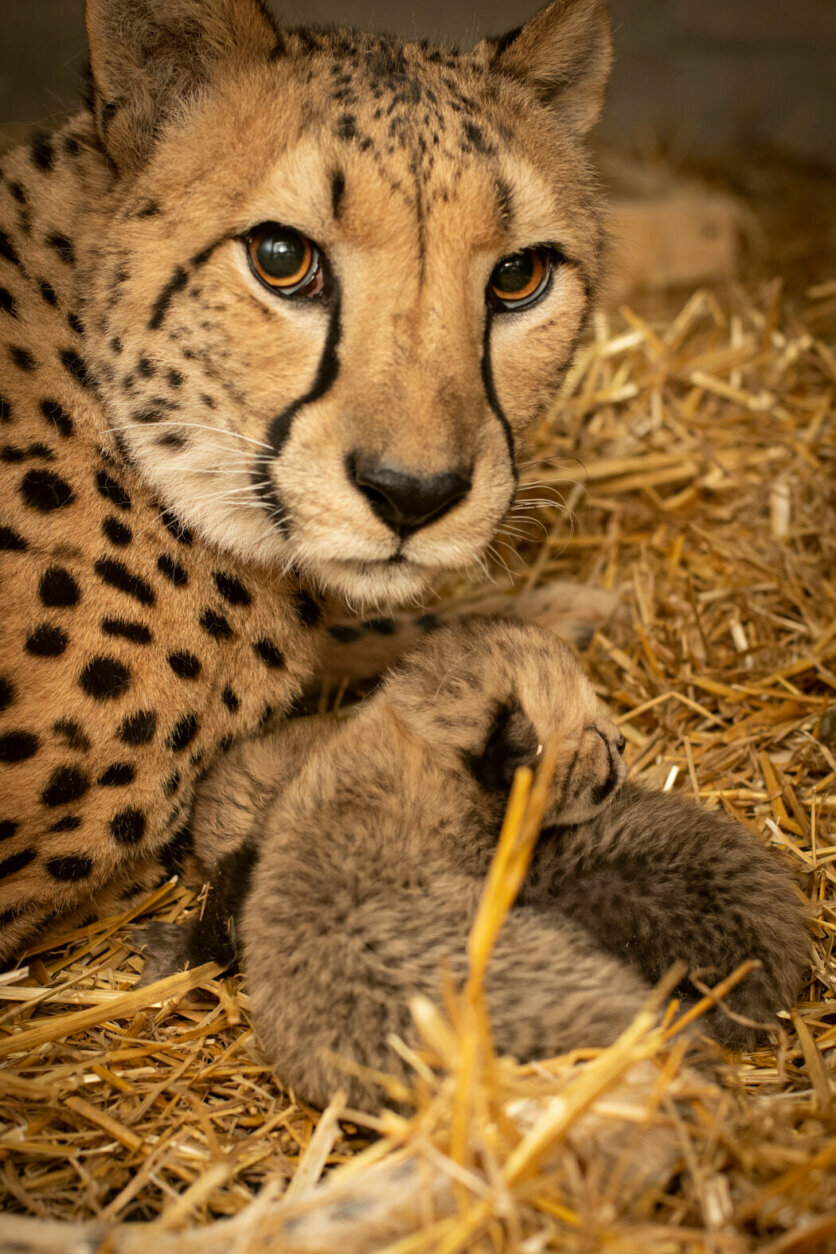
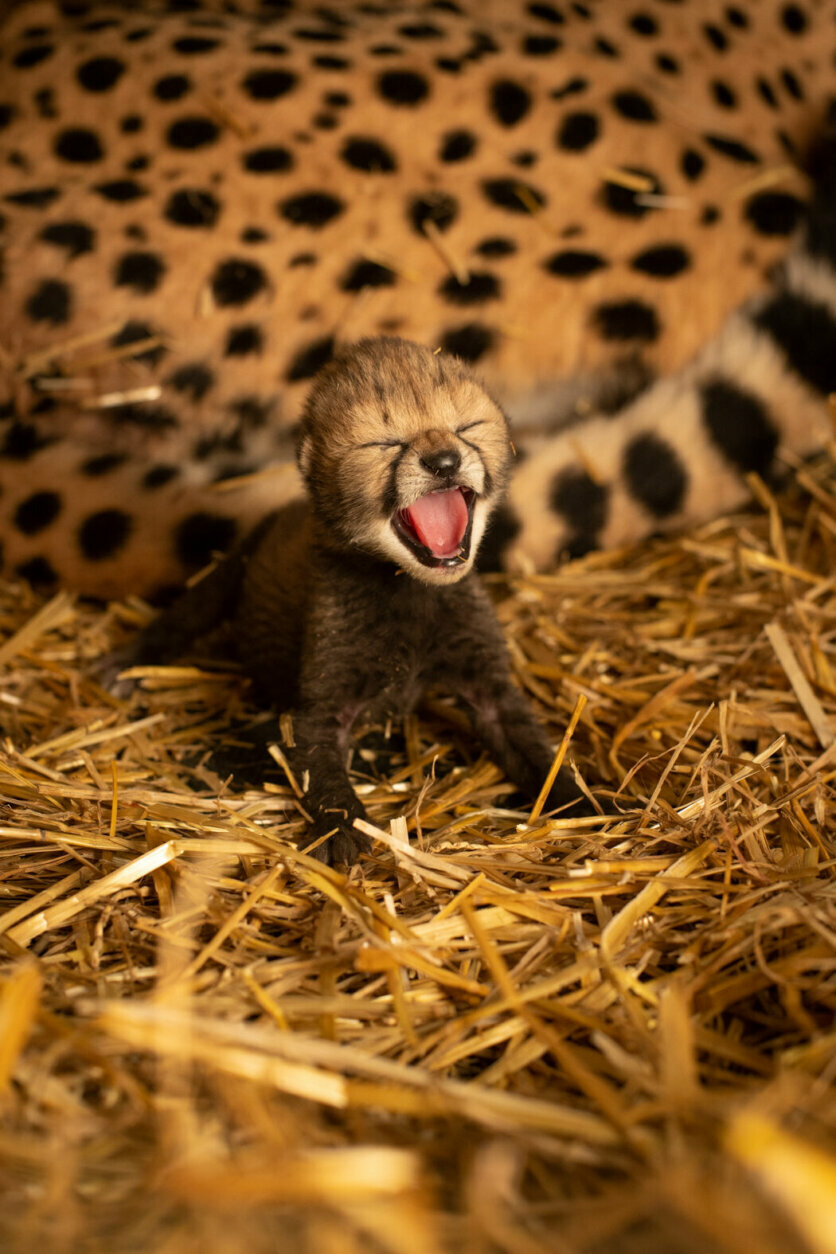

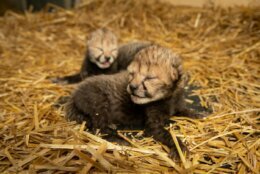
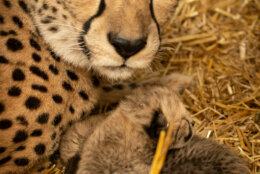
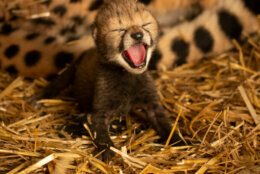
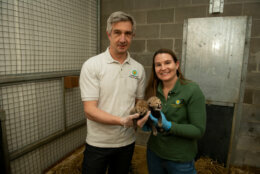
Scientists at the Smithsonian Conservation Biology Institute were among those who worked to welcome the first two cheetah cubs produced through embryo transfer on Feb. 19, at the Columbus Zoo and Aquarium in Ohio.
It is a breakthrough researchers hope will improve genetic health of wild and captive cheetahs — a species left with low genetic diversity after a brush with extinction during the last ice age.
The two cubs were born to 3-year-old cheetah Izzy, their surrogate mom. Sperm and eggs were collected from a female cheetah Kibibi at the Columbus Zoo, and a male cheetah at Fossil Rim Wildlife Center in Texas.
“We have been performing artificial insemination in cheetahs for decades, and there hasn’t been a cub born in almost 20 years,” said Adrienne Crosier, cheetah biologist at the Smithsonian Conservation Biology Institute.
“Just the fact that we were successful with embryo transfer after only the third attempt gives me hope for the future of this technique for improving cheetah management, potentially on a global scale … this is an amazing milestone for cheetahs — we can extend a cheetah’s biological clock.”
Cheetahs are listed as vulnerable, with habitat destruction and hunting wiping out the species from at least 13 counties in Africa during the past 50 years. There are only about 7,500 cheetahs left in the wild, making conservation and reproductive efforts all the more important.



